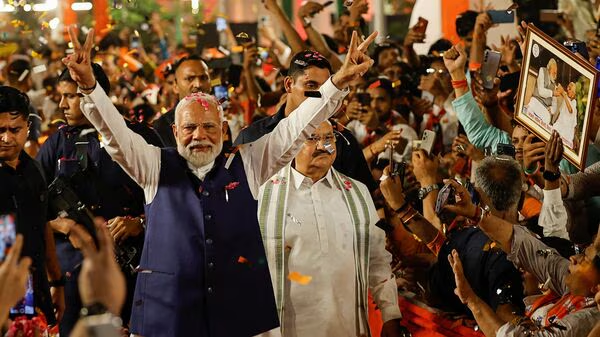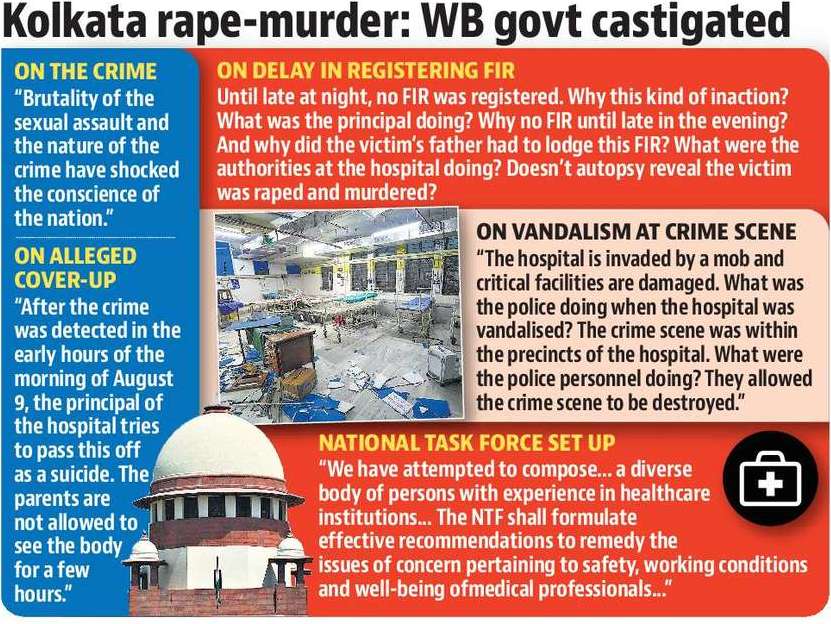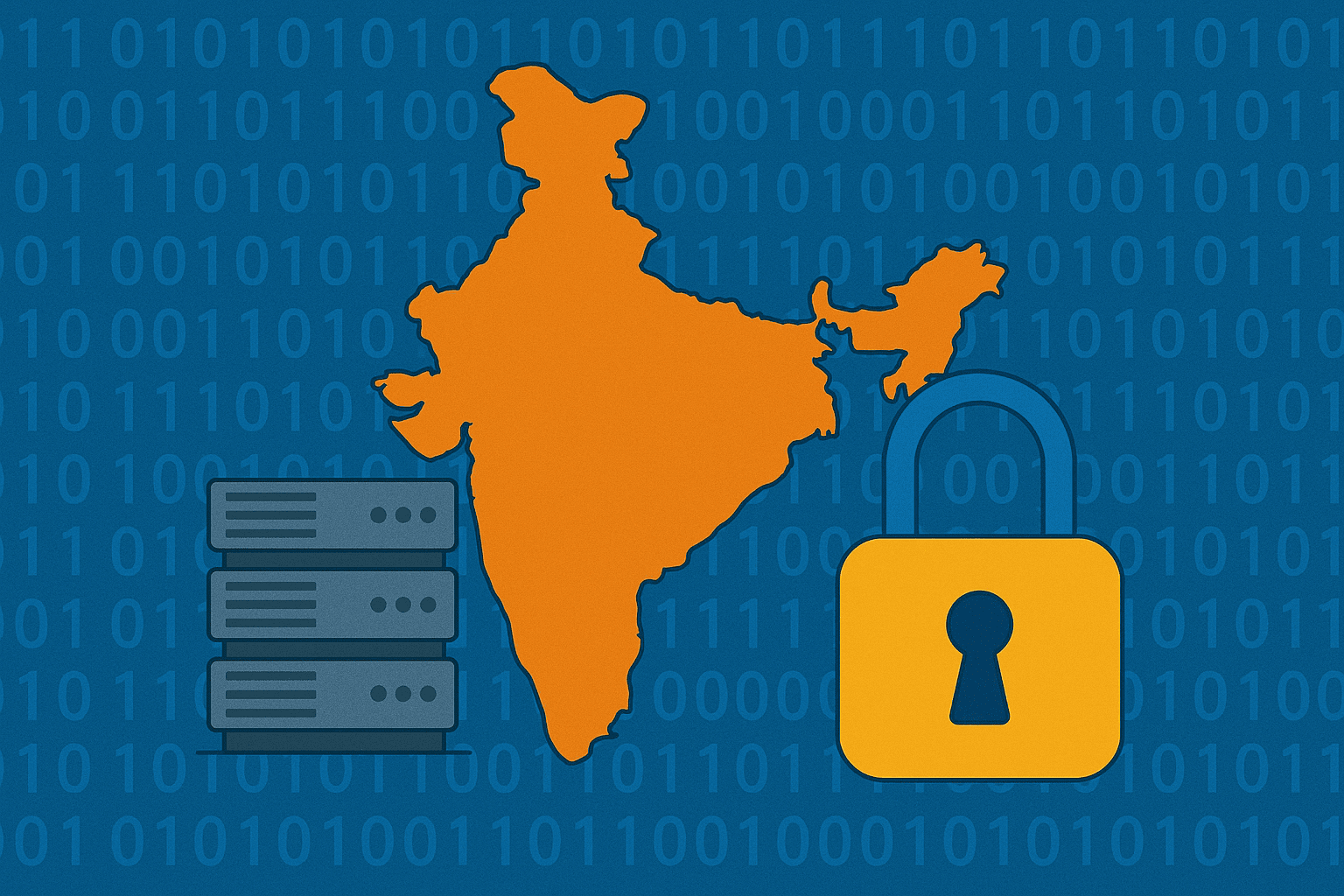The 2024 Lok Sabha elections have come and gone, leaving behind a trail of shattered exit polls, embarrassed pundits, and a political landscape on the verge of a major transformation. For those who believed in the accuracy of exit polls – which were, let’s be honest, about as reliable as predicting the weather in Chennai – the results were nothing short of a seismic shock. This election has not just toppled thrones but also rewritten the scripts of Indian politics in a fashion that would make any screenwriter working on a Ballaya film green with envy.
For Prime Minister Narendra Modi, this turn of events would be a stunning blow. The 73-year-old leader, who has never before been in a position where he needed to rely heavily on coalition partners, might now find himself negotiating with allies to maintain his grip on power. This situation is unprecedented for him, a man whose political career has been marked by dominant victories and unassailable majorities.
The counting of more than 64 crore votes cast over six weeks was a marathon effort, expected to take all day. Early figures kept changing naturally, and the anticipation was palpable across the nation. In his 10 years in power, Modi has transformed India’s political landscape, bringing Hinduism and nationalism into the mainstream arena. This once-fringe ideology now sits at the heart of Indian politics, though it has also left the country deeply divided.
Lok Sabha Election Results 2024: Hubris, Overreach, and Misuse
So, what exactly led to the Bharatiya Janata Party (BJP)’s less-than-stellar performance? The reasons are manifold, but let’s dive into the most glaring ones. First, there’s the delicious irony of hubris – that overconfidence that has brought down many a titan. The BJP, with its towering brand equity and impressive social welfare schemes, thought it had the game in the bag. Unfortunately, overreach and the misuse of government agencies came back to bite them in a manner akin to a Shakespearian tragedy, only less poetic and more dramatic.
NDA vs I.N.D.I.A: The Coalition Conundrum
Modi’s BJP is part of the National Democratic Alliance (NDA), whose members led in 240 constituencies and won 164 at the time of this publication. The Congress party, aligned with INDIA, either won or is leading in 99 constituencies. Should Modi secure a win, it would mark only the second time an Indian leader has retained power for a third term after Jawaharlal Nehru, the country’s first prime minister.
Caste Census and Social Justice
The INDI alliance entered the scene with a masterstroke of social justice and caste census promises. Unlike the BJP, which seemed to have taken a leaf out of Marie Antoinette’s playbook with its “Let them eat cake” attitude towards economic issues, INDIA hit the ground running. They formed coalitions, made more shrewd candidate choices, and focused on livelihood and employment issues that resonated deeply with the electorate. Whether or not they can actually fulfil their promises is an entirely different story, one we’ll save for another day.
The Clear Message: Bread-and-Butter Issues
The electorate sent a crystal-clear message: the importance of economic issues cannot be overstated. Unemployment, low wages, inadequate livelihoods from self-employment, and rising prices of essentials were the bread-and-butter issues that the BJP government neglected at its own peril. The opposition, particularly the Congress party, capitalised on this neglect by promising jobs, social justice, and a return to a framework of human rights.
A Fundamental Transformation: From Welfare to Rights
This election has highlighted the need for a fundamental transformation in economic policy. The shift required is from viewing public goods and services as benevolent gifts from a supreme leader to recognising them as fundamental human rights. The promises made by the opposition to expand the right to work, the right to food, the right to education, social security, and healthcare found a receptive audience among the masses.
Modi’s Presidential-Style Campaign
Over his decade in power, Modi’s popularity has often outstripped that of his party. His style has turned parliamentary elections into campaigns resembling presidential races, with the BJP increasingly reliant on Modi’s enduring brand. Local politicians have receded into the background, even in state elections, making Modi not just the prime campaigner, but the sole face of the election.
Critics argue that India’s democracy has faltered under Modi’s government, which has used strong-arm tactics to suppress political opponents, control the media, and quash dissent. The government, of course, denies these accusations, asserting that democracy is flourishing under its watch.
The youth, women, farmers, and workers all saw the promise of dignity through social justice in the opposition’s manifesto. The need for job creation is more pressing than ever, with public employment, filling vacancies, and regularizing all public workers being paramount. Micro, small, and medium enterprises, the backbone of the economy, need robust support through credit, technology, training, infrastructure, and marketing assistance.
New Welfarism: A Branding Exercise
Much has been made of the Modi government’s so-called “new welfarism.” However, it is more accurately described as “the new branding around welfarism,” with minimal changes in the level or content of welfare schemes. The Modi government’s interventions, touted as revolutionary, were merely continuations or expansions of old schemes, presented as gifts from the Prime Minister. What is needed is a shift from promises of welfare as “gifts” to a reaffirmation of these services as rights.
Revival of Federalism: Away from Centralisation
One of the most significant shifts likely to result from this election is the revival of genuine federalism. The past decade has seen an undemocratic centralisation of power, but state governments are responsible for most public service delivery that affects ordinary people. It is crucial for them to provide these services without interference, control, and partisanship from the Centre.
Role of Media and Exit Polls
Let’s take a moment to address the role of media and exit polls in this saga. If the exit polls were a genre, they would undoubtedly be fantasy fiction. The pundits who confidently predicted a sweeping BJP victory are now scrambling to explain away their inaccuracies. It’s almost as if they were describing a completely different election, perhaps one taking place in a parallel universe where unicorns roam free and exit polls are never wrong.
Election Day Drama
Election Day was nothing short of a blockbuster thriller. The counting started at 8 am with tight security, and the drama unfolded as leads trickled in. The BJP, led by its star campaigner Prime Minister Narendra Modi, who held over 200 public meetings, saw its dominance challenged. Meanwhile, the INDIA bloc, with joint rallies by opposition leaders, put up a strong fight.
BJP Campaign Strategy
As polls opened in mid-April, the BJP’s campaign initially focused on “Modi’s guarantees,” highlighting the economic and welfare achievements that the party claimed had reduced poverty. Modi’s repeated promise that “India will become a developed nation by 2047” became a rallying cry. However, as the campaign progressed, the rhetoric turned increasingly shrill, targeting Muslims—who make up 14% of the population—in a bid to energise the core Hindu voter base.
The opposition INDIA alliance attacked Modi’s Hindu nationalist politics, campaigning on issues of joblessness, inflation, and inequality. Yet, the alliance, comprising over a dozen political parties, has been beset by ideological differences and defections, raising questions about its effectiveness. The alliance has also claimed it was unfairly targeted, pointing to numerous raids, arrests, and corruption investigations against its leaders, which they argue are politically motivated. The government denies these allegations.
The reactions from political leaders were as varied as they were telling. Mamata Banerjee hailed the results as a victory for the people, calling for the judiciary to regain its freedom. She emphasized the pride and arrogance of the BJP as detrimental, celebrating the victory of the INDIA bloc. Rahul Gandhi echoed similar sentiments, thanking the people for resisting the onslaught on the Constitution and highlighting the lies spread by the BJP about the Congress manifesto.
While Prime Minister Modi won from Varanasi, other high-profile victories and losses painted a vivid picture of the changing political landscape. In Tamil Nadu, the DMK alliance swept all 40 seats, while in Punjab, jailed separatist leader Amritpal Singh won from Khadoor Sahib. The BJP’s Bansuri Swaraj won from New Delhi, and Shashi Tharoor retained his Thiruvananthapuram seat after a long worn-out battle.
Also read: Lok Sabha Elections 2024
Future of the BJP
The future of the BJP now seems uncertain. With the need to form a coalition government, the party’s once unchallenged dominance is now under scrutiny. The hubris that marked their previous terms has given way to a more humble approach, as the reality of coalition politics sets in.
The 2024 Lok Sabha elections have marked a new dawn in Indian politics. The electorate’s message is clear: economic issues, social justice, and human rights are paramount. The era of overconfidence and centralisation is over, and a new chapter of superficial federalism has begun. The INDIA alliance’s focus on real issues and smart political strategies has paid off, setting the stage for a transformative period in Indian politics.
As the final votes are being tallied, one thing is clear: Modi’s path to a third term is not as smooth as anticipated. The BJP might need to navigate the complexities of coalition politics, a new challenge for a party accustomed to absolute majorities. The reliance on Modi’s personal brand, the shifting dynamics within the NDA, and the persistent economic and social challenges will shape the future of Indian politics.
The 2024 elections have highlighted the deep divisions within the country, the economic aspirations of its people, and the evolving nature of its democracy. Whether Modi can adapt to this new political reality or whether India will witness a significant power shift remains to be seen. What is certain, however, is that the political landscape of the world’s largest democracy will never be the same.
And so, the lotus may have wilted, but it has not been entirely uprooted. The East, with its unexpected support, has given the BJP a lifeline. But whether they can rebuild from this setback remains to be seen. For now, the people have spoken, and their voice is a call for change, justice, and a government that truly works for them.




